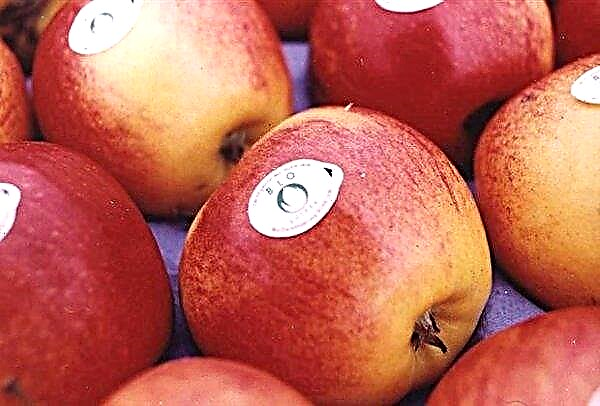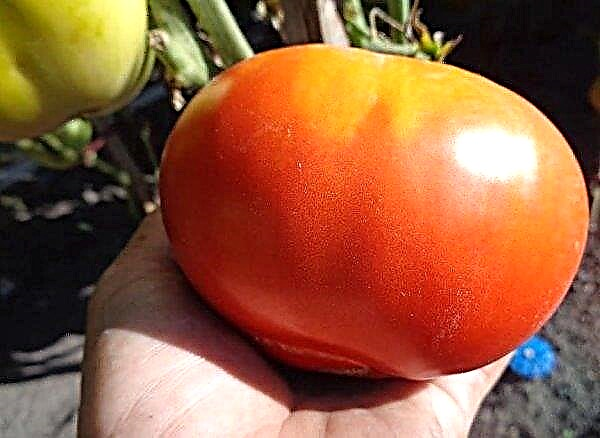Some varieties of peppers tend to change color. In this case, there are a variety of shades: from pale green and yellow to orange and rich red, from deep green to brown and purple. Peppers of violet color look especially surprising and unusual: we will talk about the reason why the fruits acquire this color, how to avoid this phenomenon and whether it is possible to eat a similar vegetable.
Why did the fruit of the pepper turn purple?
The answer to the question of why peppers turn purple can be two reasons: either disturbances in agricultural technology were made during the cultivation process, or this is a feature of a particular variety.
Pepper Care Violation
When the cause of the appearance of the violet color is an error in the care, then the following factors can act as catalysts for the process:
- sudden sharp temperature difference at night - leaves and fruits become covered with purple spots due to frostbite;
- lack of phosphorus contributes to the darkening of the plant. The first signals of such a defect will be visible on the lower leaves, which will turn purple in the first place. Having discovered this in time, you will be able to respond in a timely manner by applying phosphorus-containing fertilizers;
- violation of temperature and humidity.
Important! In the spring, it is recommended to make nitrogen-containing fertilizing, but in the summer, in addition to them, — potash and phosphate fertilizers.
Grade Features
This reason is explained by the fact that in recent years many plants have undergone the process of breeding new varieties, due to which the purple subspecies of the described culture have been bred. Due to the presence of a higher content of anthocyanins in the pulp of such fruits under the influence of solar radiation, they become violet when stained. This phenomenon is not something foreign, wrong, it is not the effect of radiation, as sometimes uninformed gardeners think. Purple vegetables are completely normal and do not carry anything negative or harmful.
This phenomenon is not something foreign, wrong, it is not the effect of radiation, as sometimes uninformed gardeners think. Purple vegetables are completely normal and do not carry anything negative or harmful.
Did you know? Some canaries are fed cayenne pepper to give their feathers a more intense red color.
What to do so that pepper does not change color
The main rules for caring for the crop, which will help preserve the color of the stem, leaves and fruits inherent in the plant, include: compliance with the regimes of temperature, humidity, weeding and timely application of fertilizing. If peppers grow in a greenhouse, then at night, be sure to close the entrance and ventilation openings to maintain daytime heat inside the greenhouse and protect seedlings from nighttime temperature changes. If the growth process occurs in open ground, then you can not do anything with the temperature factor. To properly and timely irrigation, it is recommended to monitor the moisture content of the inner soil layer. If the ground is moist under the upper dry layer, then watering is not required. It is also recommended that after the procedure, soil loosening is carried out in order to avoid the occurrence of sun-baked crust and trauma to the plant root system. It is important to use fertilizing with nitrogen to maintain and accelerate the growth and development of plants, and phosphorus and potassium fertilizers should be administered as necessary, following the instructions and dosage.
To properly and timely irrigation, it is recommended to monitor the moisture content of the inner soil layer. If the ground is moist under the upper dry layer, then watering is not required. It is also recommended that after the procedure, soil loosening is carried out in order to avoid the occurrence of sun-baked crust and trauma to the plant root system. It is important to use fertilizing with nitrogen to maintain and accelerate the growth and development of plants, and phosphorus and potassium fertilizers should be administered as necessary, following the instructions and dosage.
Important! Do not plant pepper seedlings earlier than the beginning of May in order to minimize the possibility of harmful effects of nighttime temperature drops on them.
Can I use such pepper?
The use of such pepper is not only possible, but also useful, given the fact that it contains all the useful macro- and micronutrients, nutritional minerals and vitamin complexes characteristic of ordinary pepper, but there is also an increased amount of anthocyanins favorable for the human body. These substances give the plant the ability to absorb and process solar energy into heat, thereby increasing the health and vitality of the plant. Also, due to this property, fruits with a purple hue can be grown in open ground at rather low temperatures typical of the northern regions.
These substances give the plant the ability to absorb and process solar energy into heat, thereby increasing the health and vitality of the plant. Also, due to this property, fruits with a purple hue can be grown in open ground at rather low temperatures typical of the northern regions.
Did you know? Colorimetry experts, together with doctors, were able to prove through a number of studies and tests that all shades of purple have a tonic effect on the brain and eyes, contribute to the production of hormones of joy (endorphins), melatonin.
Anthocyanins also benefit humans due to the fact that they are able to have a beneficial effect, namely:
- be antibacterial and antiviral;
- increase immunity;
- protect and regenerate blood cells;
- restore blood balance;
- strengthen the walls of the vascular system;
- improve the condition of the retina;
- lower the pressure inside the eyeball.
 Due to the frequent use of products containing a large proportion of anthocyanins, a person receives a strong immune system, a strong heart and blood vessels, sharp vision. Accordingly, the purple varieties of the plant in question are very valuable to our body. Peppers may develop violet color as a result of a number of natural or technological factors, as well as be inherent in a particular variety.
Due to the frequent use of products containing a large proportion of anthocyanins, a person receives a strong immune system, a strong heart and blood vessels, sharp vision. Accordingly, the purple varieties of the plant in question are very valuable to our body. Peppers may develop violet color as a result of a number of natural or technological factors, as well as be inherent in a particular variety.The right approach, timely application of fertilizing, regular watering and weeding can minimize possible negative manifestations in the modification of peppers. And purple varieties not only retain the full usefulness of ordinary pepper, but also surpass it due to the high percentage of anthocyanins.












